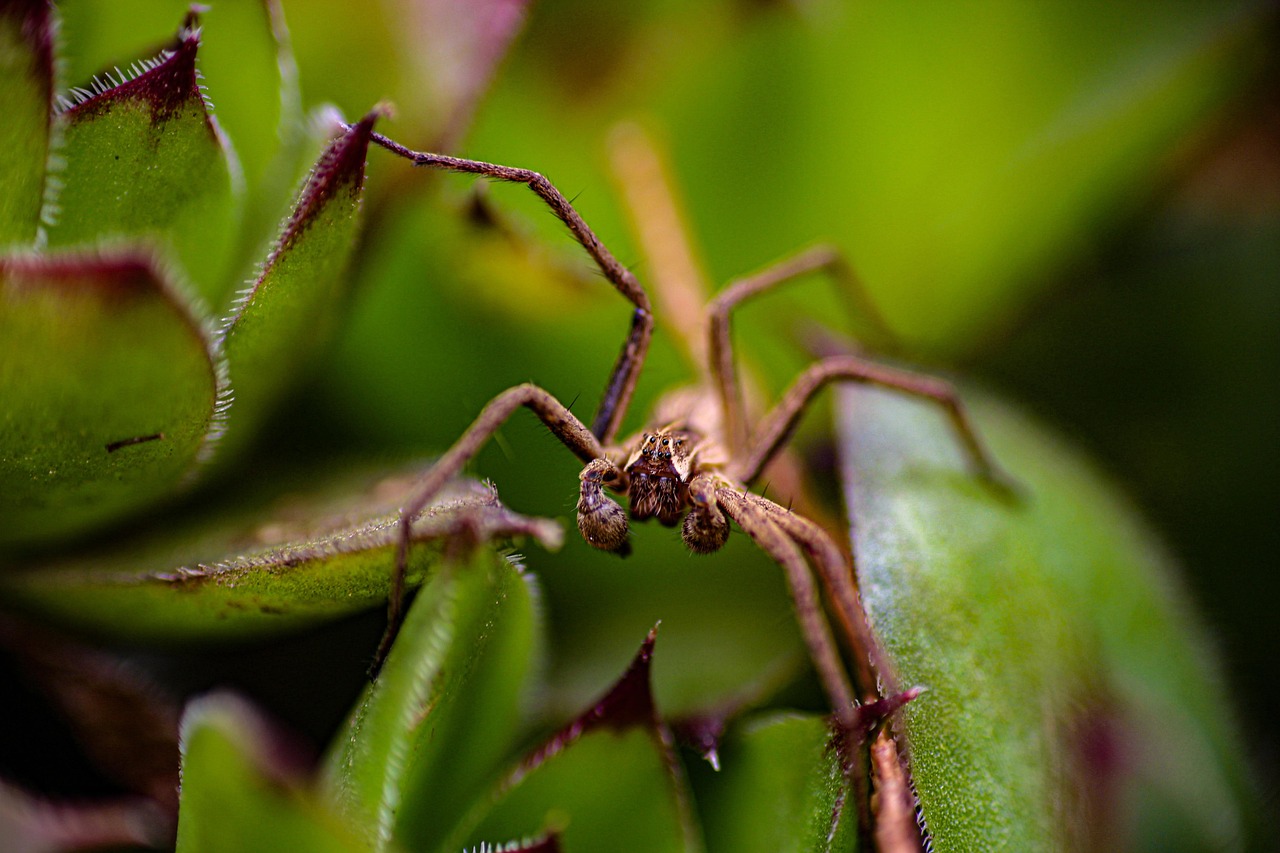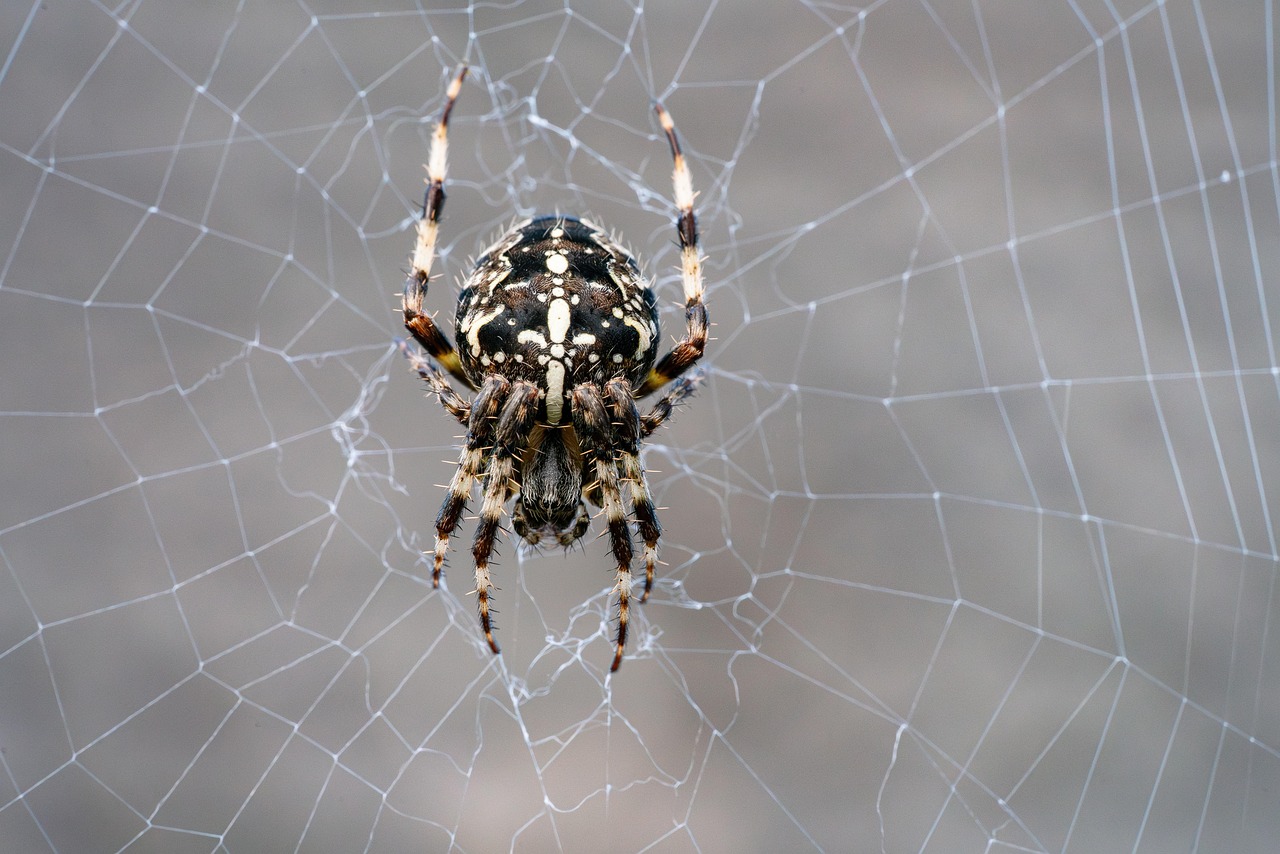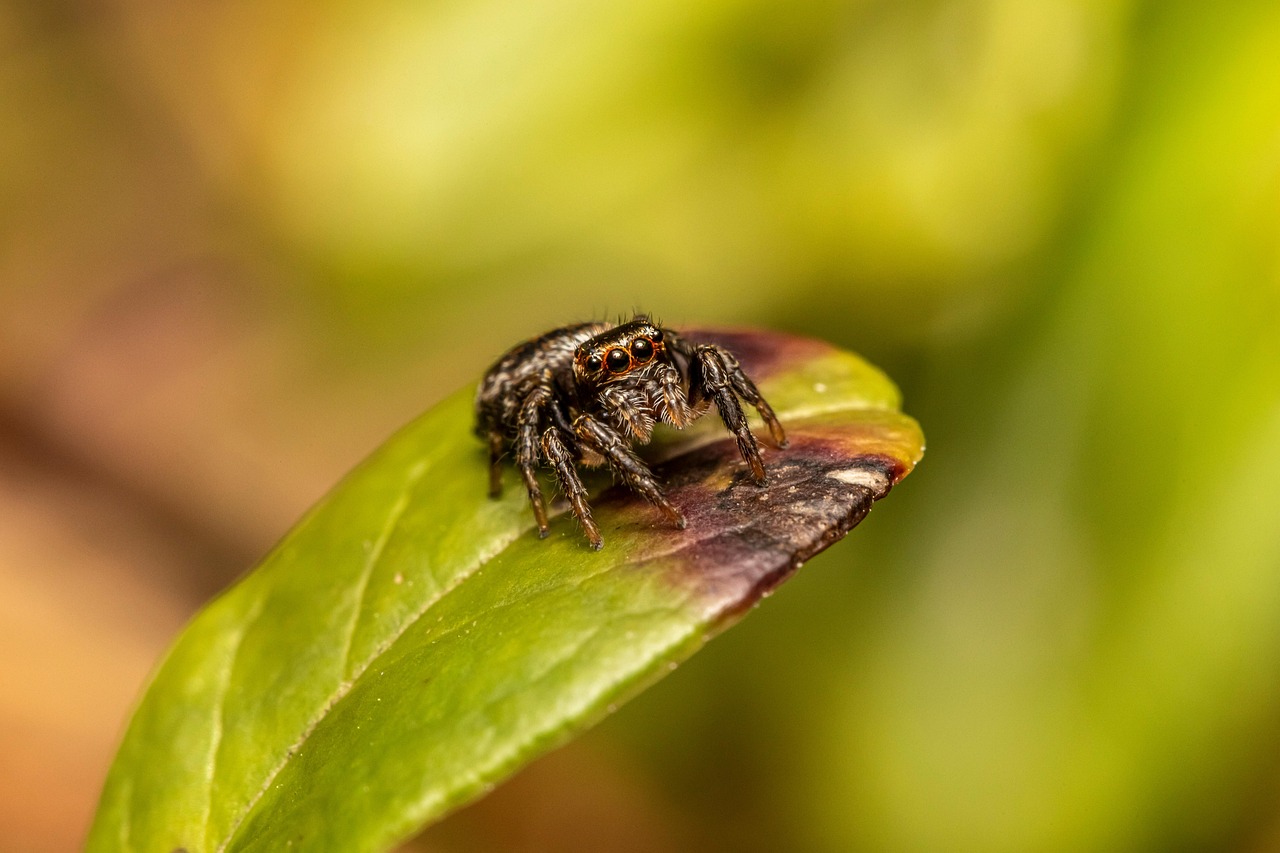Brown garden spiders often spark curiosity and concern among gardeners and homeowners. Many wonder if these arachnids are helpful allies or harmful pests in their gardens. Understanding their behavior and role in the ecosystem can help clarify this question.
Brown garden spiders, commonly known as Lycosa spp., belong to the family Lycosidae. These spiders are typically found in gardens and other outdoor spaces. They play a crucial role in controlling insect populations, which can be beneficial for plant health. However, their appearance often leads to misconceptions about their danger to humans and pets.

Their distinctive brown coloration helps them blend into their surroundings, making them efficient hunters. Brown garden spiders primarily feed on insects, including flies, beetles, and other garden pests. This predatory behavior makes them valuable for organic gardening practices.
Characteristics of Brown Garden Spiders
To better understand brown garden spiders, it is essential to look at their physical characteristics, behavior, and habitat preferences. Below are some key characteristics that define these spiders:
- Coloration: As their name suggests, brown garden spiders exhibit a brown hue, often with various patterns that aid in camouflage.
- Size: They typically range from 1 to 2 inches in length, including their legs.
- Web Type: Unlike orb-weaver spiders, brown garden spiders create irregular webs that are less structured.
- Behavior: They are generally non-aggressive and tend to flee when threatened.
Understanding these characteristics can help alleviate fears surrounding these spiders. Their role as predators means that they contribute significantly to the balance of the ecosystem in gardens and natural habitats.
The following table outlines some essential facts about brown garden spiders:
| Characteristic | Description |
|---|---|
| Scientific Name | Lycosa spp. |
| Habitat | Gardens, forests, grasslands |
| Diet | Insects (flies, beetles, etc.) |
| Reproduction | Egg sacs containing several hundred eggs |
| Lifespan | 1-2 years in the wild |
Despite their benefits, some people fear these spiders due to misconceptions about their behavior. It is essential to note that brown garden spiders are rarely aggressive towards humans. They prefer to retreat rather than confront perceived threats. This behavior highlights their role as non-threatening companions in the garden.
In conclusion, brown garden spiders exhibit characteristics that make them both intriguing and beneficial. Their presence contributes positively to the ecosystem by controlling pest populations. Understanding their behavior and ecological role can help shift perspectives from viewing them as foes to recognizing them as friends in maintaining a healthy garden environment.
Behavior and Habits of Brown Garden Spiders
Understanding the behavior and habits of brown garden spiders can provide insight into their role in the garden ecosystem. These spiders exhibit fascinating hunting techniques and social behaviors that contribute to their survival and effectiveness as pest controllers.
Hunting Techniques
Brown garden spiders are skilled hunters. They utilize various methods to catch their prey, relying primarily on their speed and agility. Here are some key hunting techniques they employ:
- Ambush Predation: Brown garden spiders often wait patiently for insects to pass by. They rely on their camouflage to remain hidden, making it easier to pounce on unsuspecting prey.
- Web Utilization: While they do not create typical orb-shaped webs, they may construct irregular webs to catch flying insects. These webs are not as strong, but they serve their purpose in capturing lightweight prey.
- Active Hunting: In addition to ambushing, these spiders can actively stalk their prey. They move quickly and stealthily, using their keen eyesight to track movements.
These hunting strategies allow brown garden spiders to thrive in various environments, from gardens to wooded areas. Their adaptability ensures that they can find food sources even when conditions change.
Nesting and Reproduction
The reproductive habits of brown garden spiders are also noteworthy. After mating, females lay hundreds of eggs in a protective sac. This sac is typically hidden in vegetation or under debris, providing safety for the developing spiders.
Once the eggs hatch, the young spiders are independent from birth. They disperse quickly to find their own territories, which helps reduce competition for resources. The following points highlight important aspects of their nesting behavior:
- Egg Sac Locations: Females choose locations that offer protection from predators and environmental factors.
- Parental Care: After laying eggs, female brown garden spiders may guard the egg sac for a short period before abandoning it.
- Life Cycle: Brown garden spiders typically undergo several molts before reaching maturity, which allows them to grow larger and stronger as they develop.
The Role of Brown Garden Spiders in Pest Control

Brown garden spiders play a significant role in maintaining ecological balance by controlling pest populations. Their diet mainly consists of insects that can be harmful to plants, making them valuable allies for gardeners. Here are some ways these spiders contribute to pest control:
- Natural Insect Control: By preying on garden pests such as aphids and caterpillars, brown garden spiders help reduce the need for chemical pesticides.
- Maintaining Biodiversity: Their presence supports a healthy ecosystem, promoting the natural balance between various insect species.
- Reducing Disease Vectors: Many insects targeted by brown garden spiders can carry diseases harmful to plants or animals. By controlling these pests, the spiders indirectly protect other organisms.
The effectiveness of brown garden spiders in pest control emphasizes their importance within the garden ecosystem. By allowing these spiders to thrive, gardeners can benefit from healthier plants and reduced pest populations naturally.
Myths and Misconceptions
Despite their many benefits, brown garden spiders are often misunderstood. Common myths perpetuate fear and misunderstanding about these creatures. Addressing these misconceptions is crucial for fostering a more positive perspective on their presence in gardens:
- Misinformation about Aggressiveness: Many believe that brown garden spiders are aggressive. In reality, they only bite when threatened.
- Association with Venom: Some people fear these spiders due to the potential for venomous bites. However, their venom is generally not harmful to humans.
- Perception as Pests: While they may seem like pests themselves due to their webs, their role as pest controllers makes them beneficial inhabitants of gardens.
Understanding these myths can help reduce unnecessary fear and promote coexistence with brown garden spiders. Recognizing their contributions can encourage gardeners to embrace these creatures rather than eliminate them.

How to Coexist with Brown Garden Spiders

Coexisting with brown garden spiders in your garden can be beneficial for both plant health and the overall ecosystem. By understanding their behavior and needs, gardeners can create an environment where these spiders thrive while minimizing any potential discomfort associated with their presence.
Creating a Spider-Friendly Environment
To encourage brown garden spiders to inhabit your garden, consider implementing the following practices:
- Avoid Chemical Pesticides: Using pesticides can harm beneficial spiders and other insects. Opt for natural pest control methods to maintain a balanced ecosystem.
- Encourage Natural Habitats: Leaving some areas of your garden wild or unkempt can provide shelter for spiders. Dense foliage, mulch, and ground cover can serve as excellent hiding spots.
- Plant Diversity: A diverse range of plants attracts various insects, which can provide food for brown garden spiders. Mixing flowering plants with vegetables can create a more inviting environment.
These practices not only support brown garden spiders but also enhance the overall health of your garden, making it resilient to pests and diseases.
Identifying Brown Garden Spiders
Being able to identify brown garden spiders can help you distinguish them from potentially harmful species. Here are some distinguishing features to look for:
- Color: Brown garden spiders typically have a brown or dusty brown coloration that helps them blend into their surroundings.
- Body Shape: They have a robust body with long legs. Their shape is often somewhat bulbous, particularly in females.
- Web Type: Their webs are irregular and not as structured as those of orb-weaver spiders. Look for tangled webs in corners or among plants.
By recognizing these characteristics, you can appreciate the presence of brown garden spiders without fear. Observing their behavior can also provide insight into their role in your garden.
The Benefits of Brown Garden Spiders in Ecosystems
The ecological benefits of brown garden spiders extend beyond pest control. They contribute to the health and balance of their environments in several ways:
Enhancing Soil Health
Beneath the surface, brown garden spiders play a role in enhancing soil health indirectly. By controlling insect populations, they help reduce the likelihood of pest-related diseases that can affect plant roots and soil quality.
- Decomposing Organic Matter: Many insects preyed upon by these spiders contribute to the decomposition process when they die, enriching the soil with nutrients.
- Promoting Biodiversity: By keeping pest populations in check, brown garden spiders support a diverse range of organisms in the ecosystem, which is essential for healthy soil.
Supporting Pollinator Populations
While brown garden spiders primarily feed on pests, their presence can also positively impact pollinator populations. By controlling harmful insect species, they create a more favorable environment for beneficial insects like bees and butterflies.
- Reducing Competition: By preying on pests that may compete with pollinators for resources, brown garden spiders help ensure that these beneficial insects can thrive.
- Increasing Plant Health: Healthy plants attract more pollinators, which is vital for successful fruiting and seed production.
The interconnectedness of these species highlights the importance of maintaining a balanced ecosystem where brown garden spiders can thrive alongside pollinators and other beneficial organisms.
Managing Fear and Promoting Understanding
For many, the presence of brown garden spiders elicits fear and discomfort. Educating yourself and others about these creatures can help mitigate these feelings. Knowledge is a powerful tool in promoting coexistence.
- Share Information: Discuss the benefits of brown garden spiders with family and friends to foster a better understanding of their role in gardens.
- Encourage Observation: Instead of fearing these creatures, encourage observing their behavior from a safe distance. Watching them hunt can be fascinating and enlightening.
- Create Educational Resources: Providing information through pamphlets or community workshops can raise awareness and dispel myths surrounding brown garden spiders.
By actively managing fear and misunderstanding, communities can work towards better coexistence with these valuable garden inhabitants, ultimately leading to healthier ecosystems.
Embracing Brown Garden Spiders in Your Garden
Creating an environment where brown garden spiders can thrive is beneficial not only for the spiders themselves but also for the overall health of your garden. By embracing their presence, gardeners can foster a more sustainable ecosystem. Here are additional strategies to consider:
- Provide Water Sources: Spiders need hydration. Adding a small water dish or creating a damp area can encourage them to stay in your garden.
- Limit Disturbance: Try to minimize disturbances in areas where spiders are active. Frequent clearing or cleaning can disrupt their habitats and force them to relocate.
- Promote Natural Predators: Encourage the presence of other beneficial insects, such as ladybugs and lacewings, which can work in harmony with brown garden spiders to control pests.
By creating a welcoming environment for brown garden spiders, you not only support their role as natural pest controllers but also enhance the biodiversity of your garden. A thriving ecosystem ultimately leads to healthier plants and a more vibrant outdoor space.
Final Thoughts
Brown garden spiders are often misunderstood creatures that play a vital role in maintaining ecological balance within gardens. While they may evoke fear due to their appearance, understanding their behavior and benefits reveals their true nature as friends rather than foes.
These spiders contribute significantly to natural pest control, helping to manage insect populations that can threaten plant health. By fostering an appreciation for their role in the ecosystem, gardeners can cultivate a healthier environment that supports both plant life and beneficial arachnids.
It is essential to recognize that educating ourselves and others about brown garden spiders can help dispel myths and fears surrounding these fascinating creatures. By sharing information, encouraging observation, and promoting coexistence, we can work towards a more harmonious relationship with the natural world.
In summary, embracing brown garden spiders as allies in our gardening endeavors not only enhances our understanding of nature but also promotes a healthier garden ecosystem. Through informed practices and appreciation for these remarkable spiders, we can contribute to the overall well-being of our gardens and the environment.
